Modeling
Flow in Unsaturated,
Fractured
Rock
"I'm caught in a dream
Sometimes it ain't what it seems
I'm all in a daze
Can't find my way out of this maze
I'm looking for clues
And wanting a change in the rules..."
From the song "Fractured Love" by Def Leppard
I have been involved in analytical and numerical
modeling of subsurface water for quite a few years now. As indicated
by the lyrics quoted above, my main interest is in finding new, improved
conceptual models of flow in unsaturated, fractured rock. The research
presented below has been conducted in conjunction with the Applied Geosciences
Department of the Idaho National Environmental and Engineering Laboratory
(INEEL). Funding for the simulations was provided through the generous
support of the INEEL Subsurface Science Education Outreach Program, administered
through the Idaho Water Resources Research Institute, and the Applied GeoSciences
Department of INEEL.
|
A Comparison
of Laboratory Testing with Model Simulations
|
| The applicability of current conceptual models of unsaturated, fracture
flow was explored by a comparison of laboratory tests and numerical simulations.
An experimental domain of a simplified fracture/matrix system was constructed
from twelve limestone bricks stacked four wide and three high, separated
by analog “fractures” whose apertures averaged from 1.5 x 10-4 m (vertical
fractures) to 1.7 x 10-8 m (horizontal fractures). Water was introduced
to the top boundary at a rate of about 1 mL/min to each of the three vertically
oriented fractures (for a total of 3 mL/min), and collected by fiberglass
wicks at the bottom boundary. These laboratory tests were simulated
using four different conceptual models (isotropic and anisotropic equivalent
continuum, dual porosity, and discrete fracture models). Despite
the simple and well-characterized nature of the experimental system, all
of the conceptual models tested failed to reproduce critical aspects of
the observed behavior. This comparison implies that important physical
processes are lacking from current descriptions of fracture flow in unsaturated
media, and casts doubt on the ability of contemporary models to make useful
predictions of subsurface flow and transport. |
Laboratory
Experimental Results
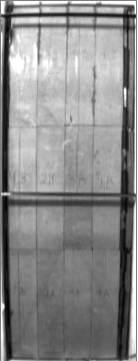
|
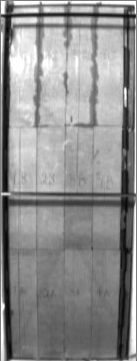
|
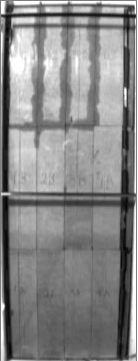
|
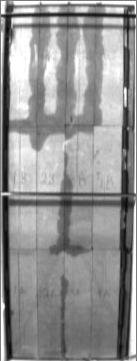
|
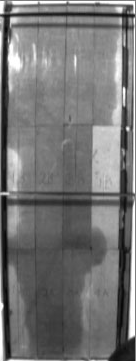
|
The series of photos above show the progress of trial 3. Water was
injected over a period of 72 hours, at a rate of 3 mL/min (1 mL/min to
each of the three analog fractures). Contrast the following behavior
visible in the photos with the modeling results below:
-Non-uniform wetting of the matrix blocks
-Focusing of flowpaths with increasing vertical distance from the injection
points
-Matrix saturation lags fracture wetting front passage by a significant
amount of time
The contrast between the behavior predicted by the models below and the
experimental results above suggests that some critical physics is missing
from current conceptual models of flow in unsaturated, fractured rock.
Identifying and including the necessary processes is an active area of
research at the University of Idaho, and the Idaho National Engineering
and Environmental Laboratory.
You can click on the plots below to get a full sized version with legible
text...
Numerical
Modeling Results: ECM (Isotropic Properties)
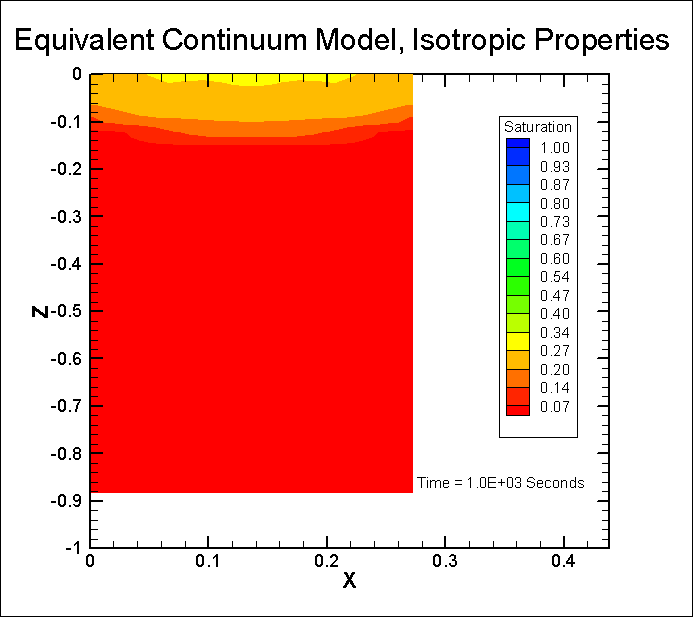 |
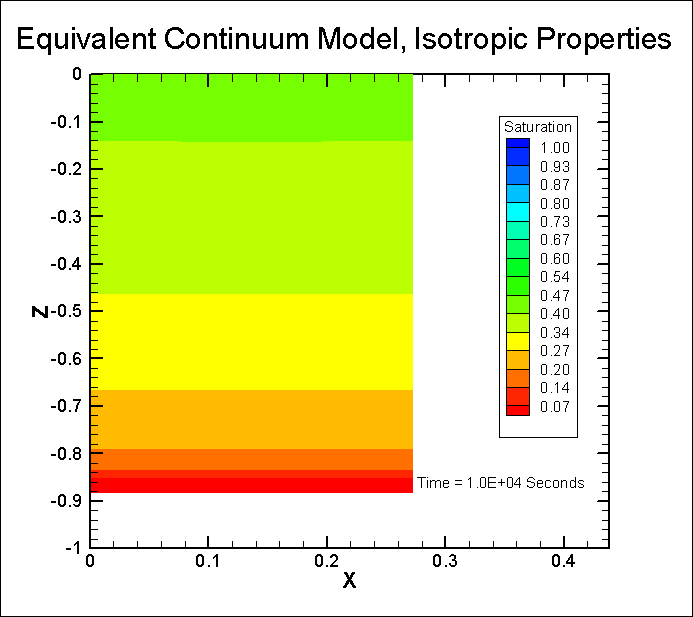 |
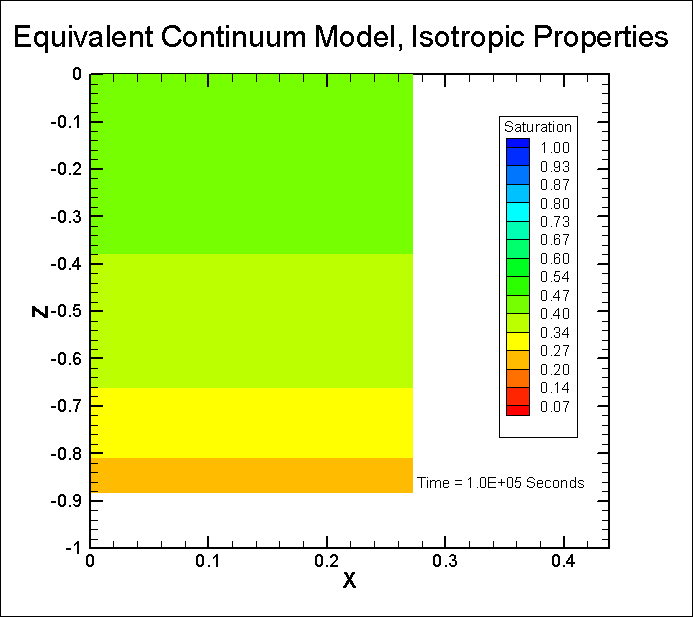 |
The Equivalent Continuum Model (ECM) combines the effects of both fractures
and matrix into one "equivalent" medium. As can be seen in the above
images, the result averages flow over the domain. Effects arising
from sharp contrasts in properties are therefore lost.
Numerical
Modeling Results: ECM (Anisotropic Properties)
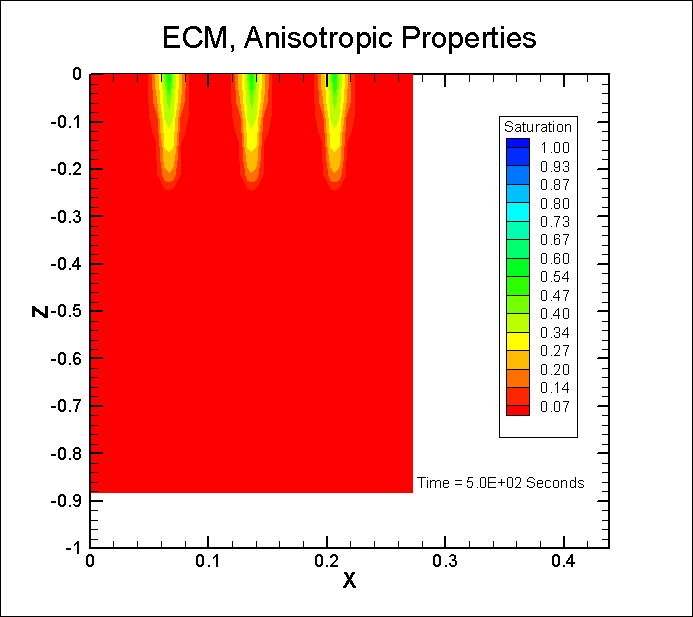 |
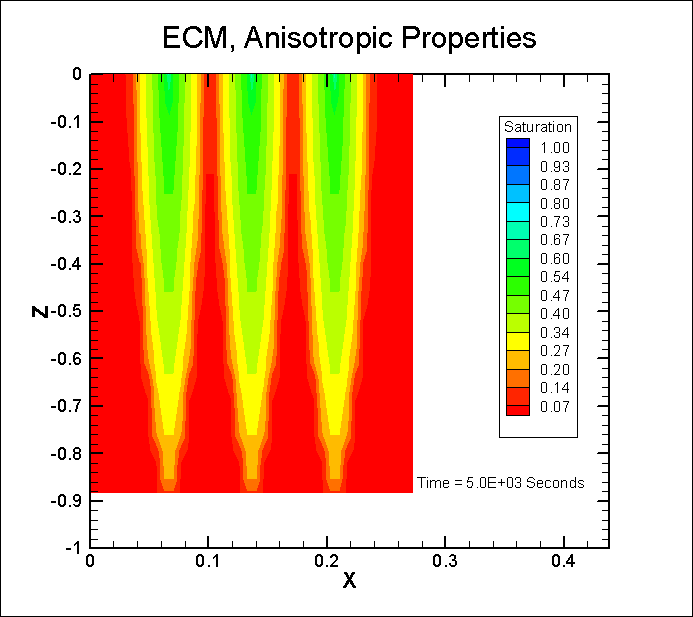 |
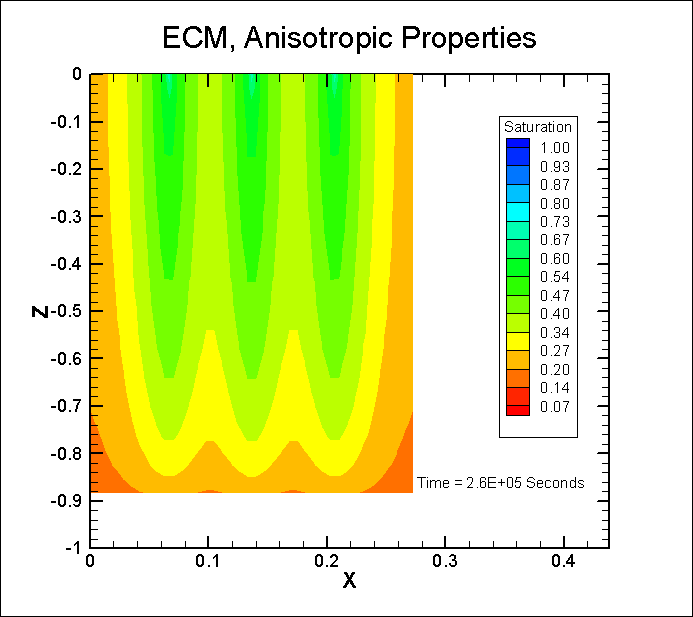 |
The images above also were generated using an ECM, but in this case the
hydraulic properties of the medium are direction dependent. Although
it appears in the plots that vertical fractures are explicitly included,
the characteristic appearance of these simulations derives from the influences
of gravity, point injection of water, anisotropy, and grid orientation.
Numerical
Modeling Results: DFM
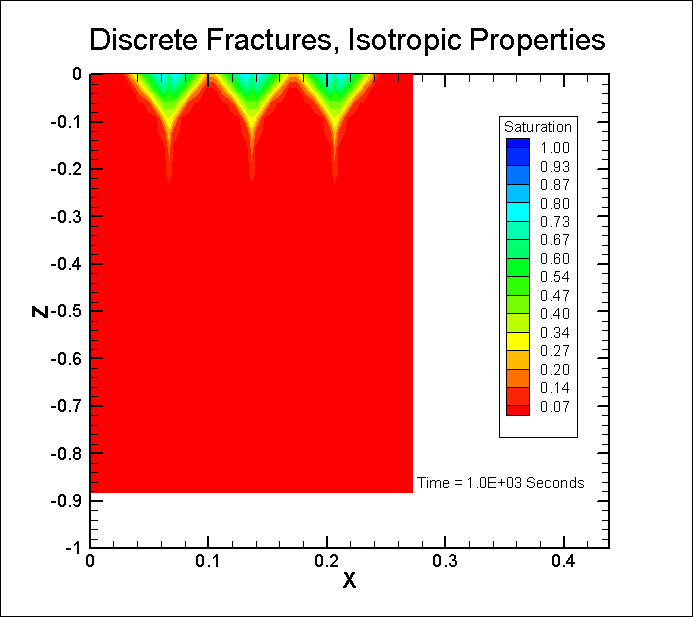 |
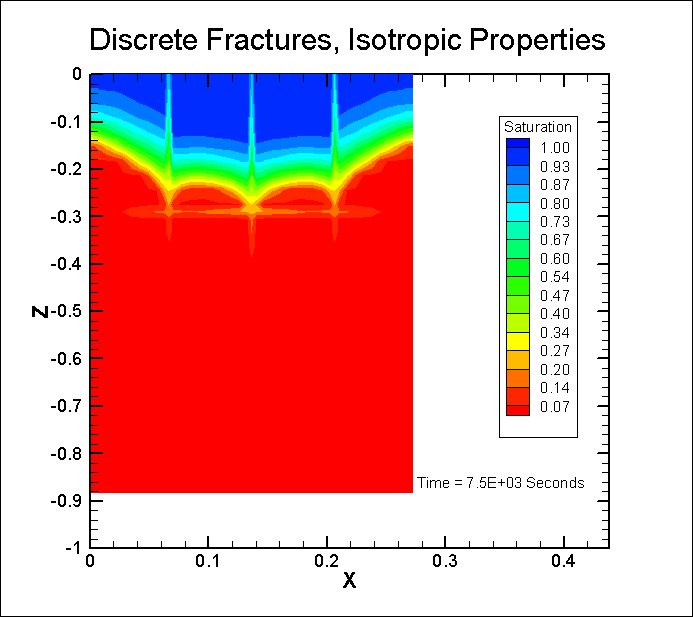 |
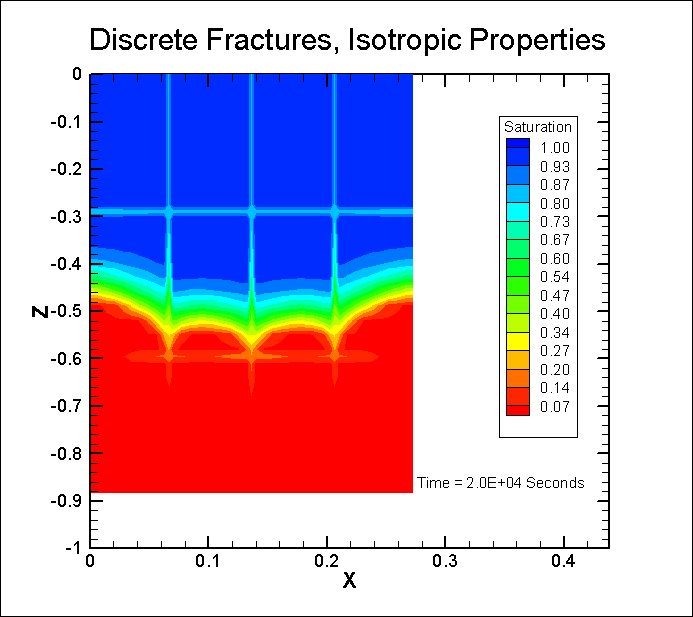 |
The Discrete Fracture Model (DFM) is the most sophisticated and computationally
intensive model presented here. DFMs use two (or more) domains, each
with its own hydraulic properties set: one domain for fractures, and one
for matrix. Although the DFM does a better job than the ECMs of resolving
some of the effects of fractures on the flow field, it fails to reproduce
many critical aspects observed in the laboratory tests shown above.
I'm on the lookout for a
sharp graduate student or two, so if the above topics interest you give
me a call (208/885-9259), or E-mail me at jfairley@uidaho.edu.


















